Natural Resource Management
NRM is the integrated management of the natural resources that make up our natural landscapes, such as land, water, soil, plants and animals. That is, our land, water and biodiversity assets.
Natural Resource Management Strategy
The Draft NRM Strategy is in development and will be released for community consultation in the next few months.
NRM STRATEGY – SUMMARY OF VISION CONSULTATION (CLOSED)
Sorell Council is excited to provide an update on its vision for developing a Natural Resource Management (NRM) Strategy for our municipality.
We are inviting community to Have your Say on the Natural Resource Management Strategy – Summary of Vision DRAFT to identify any other specific areas of interest or concerns that will help inform development of the Draft NRM Strategy and associated Action Plan.
Background
For over 2 years, our NRM Facilitator- Dibas Panta, has been actively collaborating with a wide range of local and regional organisations and community groups and integrating specialised NRM expertise into the Council’s strategies and operational activities. In October 2023, an important NRM milestone was reached with the establishment of Sorell Council’s inaugural NRM/Environmental Advisory Group (NRMEAG). The NRMEAG will assist Council through provision of valuable advice and support to develop and facilitate the NRM Strategy and implementation of its associated Action Plan which aims to build community awareness and support for Sorell’s NRM initiatives. Members are: Andrew Stevenson, Peter French, Tina Acuna, Louise Purcell, Andrew North and Councillors Janet Gatehouse and Melinda Reed.
Overview
The Natural Resource Management (NRM) Strategy will be the framework to guide the management of land, water, and biodiversity within the Sorell local government area (LGA). The NRM Strategy (the Strategy) will align to Sorell Council’s Strategic Plan 2019-2029 that envisions ‘a proud, thriving, and inclusive South East Community’ built on the values of integrity, unity, respect, and innovation.
Its purpose is to inform future actions and policies of Sorell Council with an emphasis on achieving:
- Increased understanding of our natural resources and the challenges and opportunities for their effective management.
- Increased scope and breadth of NRM related activities.
- Increased levels and effectiveness of stakeholder participation in NRM activities.
- Efficient allocation and management of the available resources to support organisational priorities and long term sustainability NRM areas.
- Improved sustainability of other Council operations, including ongoing compliance with environmental and cultural legislation and regulation.
- Improved sharing of information and communication of the Strategy’s strategic direction.
- Support to secure external funding for Council or community groups for NRM activities aligned with priority areas.
The Strategy sets out to be collaborative, inclusive and based on the best available science and knowledge. While it will identify priority areas, it must also be adaptable, dynamic and align with the priorities of the Federal and State Governments, as well as the Local Government sector and our local communities, to achieve its strategic aims.
Have your say
We are inviting community feedback on the NRM Strategy – Summary of Vision to help identify any other specific areas of interest or concerns that will help inform development of the Draft NRM Strategy and associated Action Plan. Feedback will be open from 22 February to 18 March 2024 inclusive.
No Spray Register
As part of the maintenance of roadside vegetation, Council undertakes a spraying program within both urban and rural areas using Government approved chemicals. As part of the program, Council invites residents to apply for their property frontage to be added to the No Spray Register for the 2024-2025 period.
Previous years permit holders will not need to re-apply.
APPLICATIONS CLOSE ON 30 AUGUST 2024 FOR THE 2024 YEAR.
Application for the No Spray Register for this financial year have now closed. Application need to be received by 30 August.
If your application is approved, you must undertake control of the vegetation along the frontage of your property in accordance with Council’s No Spray Register Policy.
Coastal and Estuarine Risk Mitigation Program (CERMP) - Protecting our Coastline
What is CERMP?
Council was successful in an application to the Australian Government’s Coastal and Estuarine Risk Mitigation Program to secure funding for the Hazard Risk Reduction in the Southern Beaches Region project. A total of $1.8 million was funded, which coupled with Council’s investment of $622,000, provides $2.4 million to promote disaster risk reduction in the coastal communities.
Project Objectives
The main objective is to deliver safe coastal living in the Southern Beaches region by providing safe stormwater services to assist with safeguarding our foreshore and remediating stormwater eroded dunes. The project will also assist in education and awareness about the importance of estuarine wetlands which harbours diverse flora and fauna and plays an important role of buffering floods in our coastal communities.
These projects will deliver a range of improvements and benefits for our local community and environment. All the outfalls to be upgraded will have a project design requirement for improved coastal erosion and outfall water quality. Importantly, this project will not increase the outfall size or the number of outfalls, rather it will enhance the quality of outfall in the foreshore with improvement in the quality of water.
What’s included in the 3 year program?
- Upgrade 25 outfalls in the stretch of 23 kilometres of Southern Beaches foreshore from Lewisham through to Dunalley
- Reduction of hazard and erosion to dunes
- Water sensitive urban designs
- Improvement of the water holding capacity of wetlands
- Improvement of the Blue Lagoon wetland
- Education and awareness on Carlton Estuary which buffers flooding nearby coastal communities
Community updates
Our first Community information Session was held on Tuesday 30 January 2024 at Carlton Park Surf Lifesaving Clubhouse. Thanks again to everyone who attended and participated in the discussions.
The aim of this session was to cover:
- CERMP overview
- Natural Values Assessment – Stormwater Outfalls Southern Beaches Report (North Barker Ecosystem Services)
- Criteria and assessment process to identify 25 stormwater outfalls
- Year 1 projects – Five priority outfalls (e.g. why they were selected, what benefits will be realised on completion of the works, sharing of concept project designs)
- Questions from the community
Information presented and notes are available here:
- CERMP Overview – Sorell Council Presentation by Dibas Panta
- Sorell Council CERMP Outfall Presentation by Anna Wilson
- NOTES FROM CERMP COMMUNITY INFORMATION SESSION HELD 30 JANUARY 2024
Concept Design plans for 5 Priority Outfalls
- CERMP OP1_SE112534 Report 96 Lewisham SD
- CERMP OP2_SE115466 762 Primrose Sands Road
- CERMP OP3_SE115527 Report 189 Lewisham SD
- CERMP OP4_SE115474 Report 56 Grevillea St
- CERMP OP5_SE112501 First Ave Report
Next steps
Council will continue to engage with local residents directly surrounding these outfalls and provide additional updates on progress works when available.
The selection and prioritisation of other outfalls will be notified in coming months with further community information sessions to be held.
Trees
Council encourages planting of trees and shrubs. For every tree removed because of safety reasons we encourage residents to replant, not necessarily in the same spot, but within their property and following the “things to consider” when planting. This will then ensure a green future for all generations.
Should you require further information on the types of trees or shrubs to plant in your area, look around at your neighbouring properties. Select trees or shrubs that are growing well, and note the position they have been planted. Make a note of the type of tree or shrub it may be or with the property owners permission take a small cutting.
Your local nursery can provide you with a wealth of information on the types of trees which grow well in your area. They would most likely be able to recognize your cutting and stock or recommend similar species. Planting natives on your property supports a healthier environment and increases habitat for native animals.
Native plants usually adapt to low nutrient environments and need very little fertilizer. With a good mulch and watering to first establish the tree or shrub, native plants can become low maintenance. Natives in the garden, trees, shrubs and ground covers will also reduce weed risk.
Selecting Your Tree – Things to Consider
Where to plant a tree is very important. The first step is to look up. If there are overhead utilities plant a low growing tree or select a different planting site. Planting a tall growing tree where it doesn’t have room to grow can lead to problems in the future.
The second step is to look down. Are there underground utilities, waterlines or wastewater pipes or trenches in the area? If so, select a different planting site. Planting too close to these utilities will cause problems in the future. The last step is to look around. Make sure you leave plenty of room for your tree to grow. A spot next to buildings may not be perfect when the tree reaches its mature size.
Caring for your tree
Water as needed throughout the season. To avoid over-watering remember to check the wetness of the soil under the mulch and adapt your watering to rainfall and soil conditions. Mulch improves soil structure and aeration, keeps roots cool and moist and controls weeds. Apply 2” to 4” of woody aged mulch. Stake if necessary using wide webbing straps secured to stakes.
Tree Management Policy
The purpose of Council’s Tree Management Policy is to provide direction for the management of trees under Council control throughout the Municipality.
Neighbourhood Disputes about Plants and Trees
The Resource & Planning Stream of the Tasmanian Civil & Administrative Tribunal (TASCAT) can help resolve neighbourhood tree disputes under the Neighbourhood Disputes About Plants Act 2017 if you are not able to resolve it informally with your neighbour.
You can view a copy of the act and read more information about this on the website below:
Neighbourhood Disputes about Plants Act 2017 | Resource and Planning Stream (TASCAT)
Legal Aid Tasmania also has a fact sheet which can provide you with more information:
www.legalaid.tas.gov.au/factsheets/neighbourhood-trees-and-plants/
Local weed priorities
This year, Sorell Council is concentrating its efforts towards elimination of three weeds – Paterson’s curse (Echium plantagineum), Feathertop (Pennisetum villosum), and Mirror bush (Coprosma repens). These weeds are rapidly gaining ground in our coastal ecosystem and, left uncontrolled, likely to be as problematic as Boneseed. If you recognise any of these in your garden, please replace with other evergreen local plants. If you see it on council properties, let us know by filling in the online observation form or take a photo and upload it to iNaturalist (https://inaturalist.ala.org.au/users/sign_in) or Natural Values Atlas (https://www.naturalvaluesatlas.tas.gov.au/).
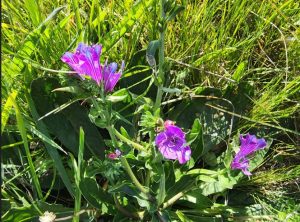
Grant from the Weed Action Fund: The Sorell Council has successfully secured a grant from Weed Action Fund, administered by NRM North to eliminate Paterson’s curse from our municipality. This ambitious project will be a collaborative effort, involving landowners who will co-contribute 50% of the funding either in cash or in-kind support.
During the next 12 months, we will be working closely with an independent contractor team to apply herbicide treatments. The project’s impact will extend beyond that timeframe, with ongoing follow-up efforts for the following years carried out by dedicated landowners. By maintaining our persistence and commitment, we aim to completely eradicate this species from our municipality.
Feathertop (a notoriously invasive weed in Tasmania), has now been identified in a single location in Lewisham. We are working with Biosecurity Tasmania and the landowner to eradicate this species. With this sighting, it may mean other unrecorded locations exist and we urge everyone to watch out for Feathertop and report it immediately.
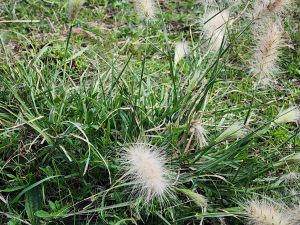
Feathertop (Pennisetum villosum)
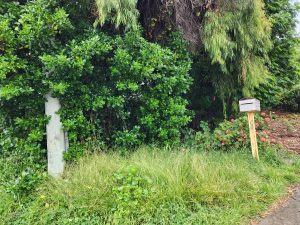
Mirror bush (Coprosma repens)
Weeds
Weeds are no different to native grasses, physiologically and morphologically. However, weeds are unwanted for a variety of reasons:
- They out compete native species.
- They change the physiology of the environment.
- They rapidly spread over a wider range, eventually changing the ecology of certain environments and do greater harm to economy in that area.
All exotic species are weeds, although our long established thinking about them as weeds is not always true. Many exotic species do not spread rapidly, are not invasive and are quite contained in their original site. However, some pose a serious threat by rapidly expanding over large areas.
Weeds are extremely costly to control, and can cause serious monetary loses causing expensive losses for agriculture and livestock. Weeds are not only a concern to farmers, they are a major concern to every individual as they directly or indirectly affect us all.
Australia has introduced approximately more than 3,207 species and naturalized in Australia. Of these species more than 500 species are considered as weeds nationwide. Consequently weed management is a great challenge to Australia. Australia’s Biosecurity is highly sensitive in terms of importing any plants and animals that are likely to become a weed or pest. There are measures in place to avoid any consequence that may be brought with the introduction of foreign plants.
https://www.agriculture.gov.au/biosecurity-trade/policy/australia/border-surveillance
Type of Weeds
The Australian Government has classified weeds into two broad categories, declared and non-declared environmental and agricultural Weeds.
Some declared weeds pose greater threat than others, and therefore they are further identified as Weeds of National Significance (WONS).
147 weeds are declared under the Weed Management Act 1999. However, not all 147 weeds are present in Tasmania. Out these declared 147 weeds, 32 weeds are declared as WONS.
Current data shows the Sorell Municipality is infested with at least 9 WONS and many other Environmental Weeds.
Statutory Weed Management
Council has legal obligation under Weed Management Act 1999 to control declared weeds on land we own or manage. From the management perspective, declared weeds are categorized into two zones – Zone A and Zone B.
Zone A species are those which have very limited presence or no presence in the Municipality The primary objective for these weeds is to erdaicate them.
Zone B species are widespread in the Municipality. The primary management objective for these weeds is to control them.
However, there are species which are in Zone A but have had wider infestation recently occur, and some Zone B species can be eradicated due to the continued efforts from all stakeholders.
Legal requirements
Management of weeds cost millions of dollars and it is not always entirely possible to eradicate weeds. We must understand one weed can be eradicated from a certain place for a certain period of time, but without continuous monitoring and follow up action, then its eradication cannot be guaranteed. Shared responsibility is critical as it is the duty of every individual to eradicate and maintain their property for weeds.
The Australian Government has declared that it is the legal responsibility of every land owner to manage their property effectively to to eradicate or otherwise contain the declared weeds within their boundary under the Weed Management Act 1999.
Sorell Council as a regulator has legal authority to inspect any property and issue weed notices to the land owner under the Weed Management Act 1999. If the weed infestations noted in Weed Notices are not brought under control within the defined time frame, then Council may issue a Requirement Notice under the Weed Management Act 1999. Failure to comply with a Requirement Notice can result in an on the spot fine of up to $1,000. Ongoing breaches of the Act may attract more significant penalties.
Environmental Weeds
These weeds are often garden escapees that multiplied in the natural environment and have caused serious economic and environmental damage.
| Common name | Scientific name | Presence recorded in Sorell LGA |
| Banana Passionfruit | Passiflora cinnabarina and Passiflora tarminiana | No |
| Bluebell Creeper | Billardiera heterophylla | Yes |
| Blue Butterfly Bush | Psoralea pinnata | No |
| Blue Periwinkle | Vinca major | No |
| Cape Ivy | Delairea odorata | Yes |
| Cape Leeuwin Wattle | Paraserianthes lophantha | No |
| Cotoneaster | Cotoneaster species | No |
| Foxglove | Digitalis purpurea | No |
| Fuchsia | Fuchsia magellanica | No |
| Gazania | Gazania linearis | Yes |
| Ivy | Hedera helix | Yes |
| Mirror Bush | Coprosma repens | Yes |
| Sea Spurge | Euphorbia paralias | Yes |
| Sweet Pittosporum | Pittosporum undulatum | Yes |
| Sycamore | Acer pseudoplatanus | No |
| Tree Lucerne | Chamaecytisus palmensis | No |
| Wandering Creeper | Tradescantia fluminensis | No |
Weeds of National Significance (WONS)
WONS are the top priority weeds for any local land manger due to their potential to cause significant impact and the associated difficulty to eradicate them once they are established.
| Common Name | Scientific Name | Presence recorded in Sorell LGA |
| African boxthorn | Lycium ferocissimum | Yes |
| Alligator weed | Alternanthera philoxeroides | No |
| Asparagus weeds | Asparagus aethiopicus, A. africanus, A. asparagoides Western Cape form, A. declinatus, A. plumosus and A. scandens. Includes original WoNS Asparagus asparagoides Excludes A. officinalis and A. Racemosis |
Yes |
| Athel pine | Tamarix aphylla | No |
| Bellyache bush | Jatropha gossypiifolia | No |
| Bitou bush/boneseed | Chrysanthemoides monilifera | Yes |
| Blackberry | Rubus fruticosus agg. | Yes |
| Bridal creeper | Asparagus asparagoides | Yes |
| Brooms Scotch | Montpellier Flaxleaf | No |
| Cabomba | Cabomba caroliniana | No |
| Cat’s claw creeper | Dolichandra unguis-cati | No |
| Chilean needle grass | Nassella neesiana | Yes |
| Gamba grass | Andropogon gayunus | No |
| Gorse | Ulex europaeus | Yes |
| Fireweed | Senecio madagas cariensis | No |
| Hymenachne | Hymenachne amplexicaulis | No |
| Lantana | Lantana camara | No |
| Madeira vine | Anredera cordifolia | No |
| Mesquite | Prosopis spp. | No |
| Mimosa | Mimosa pigra | No |
| Opuntioid cacti | Opuntia spp. (excludes O. ficus-indica), Cylindropuntia spp., Austrocylindropuntia spp. |
No |
| Parkinsonia | Parkinsonia acuteata | No |
| Parthenium weed | Parthenium hysterophorus | No |
| Pond apple | Annona glabra | No |
| Prickly acacia | Acacia nilotica | No |
| Rubber vine | Cryptostegia grandiflora | No |
| Sagittaria | Sagittaria platyphylla | No |
| Salvinia | Salvinia molesta | No |
| Serrated tussock | Nassella trichotama | Yes |
| Silverleaf nightshade | Solanum elaeagnifolium | No |
| Water hyacinth | Eichhornia crassipes | No |
| Willows except weeping willows, pussy willow and sterile pussy willow |
Salix spp. except S. babvlonica, S. x calendendron and S. x reichardtii |
Yes |
Declared Weeds
These are combination of WONS and other environmental weeds that are listed under the Weed Management Act 1999. They are not necessarily present at current state but can pose serious impact if they are introduced.
| Common Name | Scientific Name |
| African Boxthorn | Lycium ferocissimum |
| African Feather Grass | Cenchrus macrourus(syn. Pennisetum macrourum) |
| African Lovegrass | Eragrostis curvula |
| African Thistle | Berkheya rigida |
| Alligator Weed | Alternanthera philoxeroides |
| Amsinckia species | Amsinckia species |
| Angled Heath | Erica quadrangularis |
| Apple-of-Sodom | Solanum sodomaeum |
| Arrowhead | Sagittaria montevidensis |
| Artichoke Thistle | Cynara cardunculus |
| Asparagus Fern | Asparagus scandens |
| Athel Pine | Tamarix aphylla |
| Bathurst Burr | Xanthium |
| Bear-skin Fescue | Festuca gautieri |
| Bell Heather | Erica cinerea |
| Bellyache Bush | Jatropha gossypiifolia |
| Berry Heath | Erica baccans |
| Besom Heath | Erica scoparia |
| Bicolored Heath | Erica discolor |
| Bifora | Bifora testiculata |
| Blackberry | Rubus fruticosus aggregate |
| Boneseed | Chrysanthemoides monilifera (including subspecies) |
| Bridal Creeper | Asparagus asparagoides |
| Bridal Veil | Asparagus declinatus |
| Broomrape | Orobanche species (except O. minor and O. cernua var. australiana) |
| Cabomba | Cabomba caroliniana |
| Californian Thistle | Cirsium arvense |
| Caltrop | Tribulus terrestris |
| Canadian Pondweed, Elodea | Elodea canadensis |
| Cane Needle Grass | Nassella hyalina |
| Cape Tulips | Moraea species |
| Cat’s Claw Creeper | Dolichandra unguis-cati |
| Chilean Needle Grass | Nassella neesiana |
| Climbing Asparagus | Asparagus africanus |
| Climbing Asparagus Fern | Asparagus plumosus |
| Common Crupina | Crupina vulgaris |
| Common Heliotrope | Heliotropium europaeum |
| Cornish Heath | Erica vagans |
| Corsican Heath | Erica terminalis |
| Cotton Thistles | Onopordum species |
| Creeping Knapweed | Acroptilon repens |
| Creeping Yellowcress | Rorippa sylvestris |
| Cross-leaved Heath | Erica tetralix |
| Crow Garlic | Allium vineale |
| Cut-Leaf Nightshade | Solanum triflorum |
| Darwin’s Barberry | Berberis darwinii |
| Datura | Datura species |
| Dodder | Cuscuta species (excluding Cuscuta tasmanica) |
| Dorset Heath | Erica ciliaris |
| Egeria, Dense Water Weed | Egeria densa (syn. Elodea densa) |
| Elisha’s Tears | Leycesteria formosa |
| English Broom | Cytisus scoparius |
| Erica species | Erica glandulosa |
| Erica species | Erica holosericea |
| Erica species | Erica melanthera |
| Espartillo | Amelichloa caudata (syn. Achnatherum caudatum) |
| False Cleavers | Galium spurium |
| False Yellowhead | Dittrichia viscosa |
| Feathertop | Cenchrus longisetus(syn. Pennisetum villosum) |
| Fennel | Foeniculum vulgare |
| Fireweed | Senecio madagascariensis |
| Flax-leaf Broom | Genista linifolia |
| Floating Water Chestnut | Trapa species |
| Gamba Grass | Andropogon gayanus |
| Giant Hogweed | Heracleum mantegazzianum |
| Gorse | Ulex europaeus |
| Ground Asparagus | Asparagus aethiopicus |
| Hawkweed | Hieracium (syn. Pilosella) species |
| Heather | Calluna vulgaris |
| Holly | Ilex aquifolium |
| Holly-leaved Senecio | Senecio glastifolius |
| Horehound | Marrubium vulgare |
| Hornwort | Ceratophyllum demersum |
| Horsetail | Equisetum species |
| Hydrilla | Hydrilla verticillata |
| Hymenachne | Hymenachne amplexicaulis and Hymenachne x calamitosa |
| Innocent Weed (Spiny Burrgrass) | Cenchrus longispinus |
| Irish Heath | Erica erigena |
| Japanese Knotweed | Fallopia japonica |
| Karamu | Coprosma robusta |
| Kochia | Bassia scoparia (syn. Kochia scoparia) |
| Lagarosiphon (Oxygen Weed) | Lagarosiphon major |
| Lantana | Lantana camara |
| Lobed Needle Grass | Nassella charruana |
| Madeira Vine | Anredera cordifolia |
| Mallee Cockspur | Centaurea eriophora |
| Meadow Parsley | Oenanthe pimpinelloides |
| Mediterranean Daisy | Urospermum dalechampii |
| Mesquite | Prosopis species |
| Mexican Feather Grass | Nassella tenuissima |
| Miconia | Miconia species |
| Mimosa | Mimosa pigra |
| Montpellier Broom | Genista monspessulana |
| New Zealand Sedges | Carex albula, C. buchananii, C. flagellifera and C. testacea |
| Nodding Thistle | Carduus nutans |
| Onion Weed | Asphodelus fistulosus |
| Opuntioid Cacti | Austrocylindropuntia species |
| Opuntioid Cacti | Cylindropuntia species |
| Opuntioid Cacti | Opuntia species (excluding Opuntia ficus-indica) |
| Pampas Grasses | Cortaderia species |
| Pampas Lily-of-the-Valley | Salpichroa origanifolia |
| Parkinsonia | Parkinsonia aculeata |
| Parodi | Eleocharis parodii |
| Parrot’s Feather | Myriophyllum aquaticum (syn. M. brasiliense) |
| Parthenium Weed | Parthenium hysterophorus |
| Paterson’s Curse | Echium plantagineum L. |
| Prickly Acacia | Acacia nilotica ssp. indica |
| Purple Nut Grass | Cyperus rotundus |
| Ragwort | Senecio jacobaea |
| Rubber Vine | Cryptostegia grandiflo |
| Saffron Thistle | Carthamus lanatus L. |
| Sagittaria | Sagittaria platyphylla (syn. Sagittaria graminea) |
| Salvinia | Salvinia molesta |
| Senegal Tea Plant, Temple Plant | Gymnocoronis spilanthoides |
| Serrated Tussock | Nassella trichotoma |
| Silver-leaf Nightshade | Solanum elaeagnifolium |
| Skeleton Weed | Chondrilla juncea |
| Slender Thistle | Carduus pycnocephalus and Carduus tenuiflorus |
| Spanish Heath | Erica lusitanica |
| Spiny Burrgrass, (Innocent Weed) | Cenchrus longispinus and Cenchrus incertus |
| Spiny Emex | Emex australis |
| Square Stemmed St John’s Wort | Hypericum tetrapterum |
| St John’s Wort | Hypericum perforatum |
| Star Thistle | Centaurea calcitrapa |
| Stemless Thistle | Onopordum acaulon |
| Stinking Mayweed | Anthemis cotula |
| Texas Needle Grass | Nassella leucotricha |
| Three-horned Bedstraw | Galium tricornutum |
| Tree Heath | Erica arborea |
| Tumbleweed | Amaranthus albus |
| Viper’s Bugloss | Echium vulgare L. |
| Water Heath | Erica caffra |
| Water Hyacinth | Eichhornia crassipes |
| Western Cape Bridal Creeper | Asparagus asparagoides Western Cape form |
| White Spanish Broom | Cytisus multiflorus |
| Whiteweed (Hoary Cress) | Lepidium draba |
| White-edged Nightshade | Solanum marginatum |
| Wild Rice | Zizania species |
| Willows | (Salix species, excluding S. babylonica, S. x calodendron and S. x reichardtii ) |
| Winter Heath | Erica carnea |
| Witchweed | Striga species (all non-indigenous species) |
| Yellow Nut Grass / Yellow Nut Sedge | Cyperus esculentus |
Non-Declared Weeds
These species are not yet declared but have the potential to become species of significant concern if not managed properly and timely.
| Common Name | Scientific Name | Presence recorded in Sorell LGA |
| Capeweed | Arctotheca calendula | No |
| Cumbungi, bullrush | Typha species | Yes |
| Docks | Rumex species | No |
| Glyceria | Glyceria maxima | No |
| Paspalum | Paspalum dilatatum | No |
| Rope Twitch, English Couch Grass | Agropyron repens | No |
| Spear Thistle, Scotch Thistle | Cirsium vulgare | No |
| Sweet Briar | Rosa rubiginosa L. | Yes |
| Variegated Thistle | Silybum marianum L. | Yes |
Our Weed Management Plan
There are number of ongoing projects in relation to the management of weeds in our Municipality.
We regularly engage in managing weeds from our parks and reserves. Further, we also control weeds in the roadside based on the needs assessment undertaken by our Parks and Reserves crew.
Last year, we received a grant from the Weed Action Fund to help a number of landowners to manage targeted weeds. The Council requested expression of interest from landowners within LGA and based on grant eligibility, some of the landowners were granted a one time grant of $5000 to manage/control these weeds.
This year, another round of the Weed Action Fund grant has been implemented via a contractor to manage targeted weeds such as Gorse, Serrated Tussock and Chilean Needle Grass. Properties were identified where these weeds are causing serious impacts and property owners were contacted to liaise with the contractor to implement the control action.
We are continuously working to contain weeds that causes serious threat to our natural environment and livelihood of our communities. We understand managing weeds is a continuous process that involves our organisation, everyone in our community and many other stakeholders outside of our Municipality.
Local Community Action
We have highly enthusiastic and motivated local community groups that engages our local communities to manage weeds in their local area. These groups have been successful in controlling weeds within their community. These community groups run regular Working Bee that focuses on controlling weeds, removing litter and taking care of the natural environment.
If you are interested about understanding weeds and want to directly get involved in managing these obnoxious weeds, please reach out to us via NRM department or contact your local community groups – Southern Beaches Landcare/Coastcare Group, Marion Bay Coastcare Group, Friends of Blue Lagoon and Wildcare Friends of Pitt Water Orielton Lagoon.
Priority Weeds for Sorell Council:
All weeds affect many aspects of life and livelihood, such as agriculture, water quality, environment, aesthetic and human health. However, there are few weeds that are more invasive, dominant and poses more serious impacts to communities. Based on its invasiveness, impact, relative abundance and regional partnership, some of the species are priority weeds over other weeds in Sorell municipality.
- African Boxthorn (Lycium ferocissimum)
- African love grass (Eragrostis curvula)
- Blackberry (Rubus fruticosus)
- Boneseeds (Chrysanthemoides monilifera)
- Bridal Creeper (Asparagus asparagoides)
- Chilean Needle Grass (Nassella neesiana)
- Gorse (Ulex europaeus)
- Serrated Tussock (Nassella trichotoma)
- Spanish heath (Erica lusitanica)
Principles of Weed Management
The Australian Weeds Strategy (AWS) 2017 – 2027 has outlined following seven principles that should underpin weed management in Australia and guide planning, investment and actions.
1) Effective weed management is a responsibility shared between landholders, community, industry and government.
2) Evidence-based decision-making should underpin the approach to weeds.
3) Risk-based prevention and early intervention is generally the most cost-effective approach for managing weeds.
4) Prioritisation of weed management must be informed by a risk based approach, considering feasibility, likelihood of success, impact and national significance.
5) Coordination amongst landholders, community, industry and government is necessary to manage weeds at a landscape scale.
6) Sustaining capability and capacity across landholders, community, industry and government is fundamental to effective weed management.
7) Individuals, organisations and industry groups that create risks that may result in a weed entering, emerging, establishing or spreading in Australia have a role in minimising the impacts and contributing to the costs of management.
We adopts the roles and responsibilities outlined in the AWS 2017 as below:
- Exercise statutory duties to encourage responsible weed management.
- Manage weed problems on our land in a responsible way, in co-operation with other landowners.
- Assist with the coordination of community weed management programs.
- Represent community interests in weed management.
- Support the activities of local groups undertaking weed management.
- Assist with data collection and information exchange.
- Develop and adopt ‘good neighbour’ policies, where appropriate, to help reduce the spread and impacts of high risk weed species.
- Support and build public awareness about weed issues.
Weed management depends on the presence, type, invasiveness and cost to management. However, if we act early and thoroughly we don’t need to be selective in managing these weeds. Prevention of any weed in an area is the best approach and early detection of species will help management reduce the cost significantly. However, the ideal condition is not always available thus, we have to work on stages for species based on the strategy.
Resources
Weed resources coming soon……
Reporting Weeds
It is very important that everyone is aware of these obnoxious weeds and report them as they see them.
One of the simplest way of reporting them is taking a picture and uploading them via iNaturalist. This is an app that can be downloaded on android devices via the Google Play Store or on Apple devices via the App Store.
Please click here to access the Sorell Council weed observation form
Learning about native ducks and introduced ducks
Native or local ducks are not necessarily what we see every day in our waterbodies, but amazingly – Tasmania does have 11 of Australia’s 17 native duck species!
We want to protect our native ducks from the impact of introduced species. One of these, Mallards, were introduced from the Northern hemisphere – they are bigger, aggressive and eat a wider range of foods than our native species. Mallards can cause serious impacts on native species and outcompete them, thereby leading to decline in population or eventual extinction.
Significant concerns have also been raised due to cross-breeding of similar looking native Pacific Black Ducks with Mallards. Cross-breeding cause hybridization and hybrids have caused serious impact on native species around the globe.
Knowing what is a native duck or an introduced species can help. The Ducks of Tasmania booklet is your easy-to-use guide to 11 of Tasmania’s native duck species!
Why is this important?
Native birds play an important role in ecological balance by feeding in algae, preventing unwanted algal bloom and feed on pests that checks diseases.
They also:
- act as an important vector for seed dispersal
- are important ecological indicators, they can respond to slight changes in the environment and allow us to act quickly
- they provide economic value to our livelihood
- they are important ecotourism assets
What we can do to help
- do not create environment for Mallards to compete with our native species by not feeding them, provide water, or shelter.
- domestic ducks should be managed within defined boundaries and not allow them to interbreed with feral species
- keep dogs on-lead and away from ducks
- get to know more about different duck species, their feeding habit, their habitat and their role in the environment
- inspire those around you to appreciate the complexity of nature
Get to know your ducks!
Australian Wood Duck – Chenonetta jubata
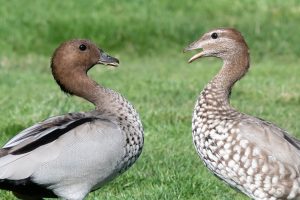
Figure 1: Left Male and right female Australian Wood Duck (Photo credit Helen Cunningham)
Wood ducks are unique in that they like to build their nests in tree hollows, which often means ducklings have to take a big jump from a tree after hatching. Wood ducks, sometimes known as Maned Geese, are very strange looking compared to other ducks, with a shorted bill made for pulling and chewing grass and longer legs with small claws on their feet which help them grip on to tree branches. They actually prefer to be on land than in the water most of the time, as their favourite food is grass.
Chestnut Teal – Anas castanea
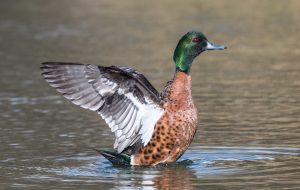
Figure 2: Chestnut Teal (male), (Photo credit: Helen Cunningham)
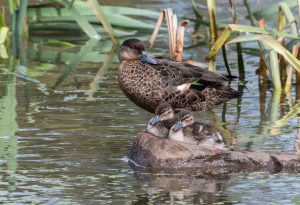
Figure 3: Chestnut Teal (female with ducklings), (Photo credit: Helen Cunningham)
Chestnut Teals are a small duck with a round head, grey bill and red eyes. Chestnut Teals are ‘dabbling’ ducks that feed mainly on aquatic vegetation and insects, often by sticking their heads under the water to feed while sticking their rear ends and legs up out of the water! Chestnut teals live in pairs year round, and it’s common to find chestnut teals living in large flocks or just as a couple.
Similar to: Grey teal, male mallards (green heads).
Grey Teal – Anas gracilis
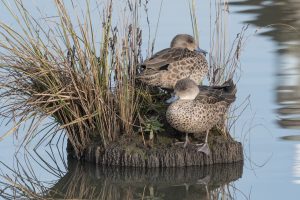
Figure 4: Grey Teal (Couple), (Photo credit: Helen Cunningham)
Grey Teals can be a challenge to spot, being very similar in appearance to their female Chestnut Teal relatives. Both males and females have dark brown/grey feathers with lighter cream-brown edges, pale throats and necks and red eyes. They are lighter overall than female chestnut teals, with white throats and necks and a grey-streaked brown face and head.
They have even self-introduced themselves to New Zealand in search of water.
Similar to: Female Chestnut Teal
Pacific Black Duck – Anas superciliosa
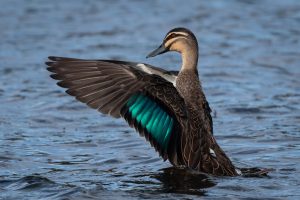
Figure 5: Pacific Black Duck (Photo credit: Helen Cunningham)
Despite the name, Pacific Black Ducks are actually mostly brown with cream coloured faces. Pacific Black Ducks are an elegant dabbling duck, easily identified by two black stripes on the face that extend from the grey bill to the rear of the head. Despite being widespread they are not always common, and this is due to cross-breeding (hybridisation) with introduced mallard ducks. This is happening in parts of Tasmania like the Derwent Estuary, where most of the pacific black ducks are in fact mallard crosses. PBDs have a very short lifespan of only 2 to 3 years, so any PBDs you see are no older than a human toddler!
Pure Pacific Black Ducks can be identified by having two bold black stripes on the face, with a defined cream face patch in between them that extends from the slate-grey bill to the rear of the head. PBDs have thin cream/brown feather edges and dark grey/brown legs.
Similar to: Mallard x Pacific black duck hybrid
Australian Shelduck – Tadorna tadornoides
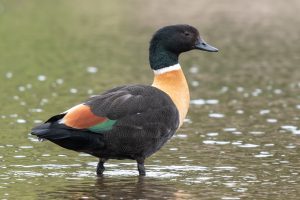
Figure 6: Australian Shelduck (male), (Photo credit: Helen Cunningham)
Shelducks are one of Tasmania’s bigger ducks and perhaps this is why they’re sometimes called “mountain ducks.” While they tower over smaller native ducks like teals and Pacific Black Ducks, they actually prefer to live in lowland areas as opposed to mountains and graze on green grass or aquatic vegetation and insects. Both males and females have black heads and necks, separated from a cinnamon brown breast by a white neck ring. The rest of the body is mostly black with white and green panels on the wings. You can tell females apart from the white rings around the eyes and the base of the bill.
Hardhead – Aythya australis
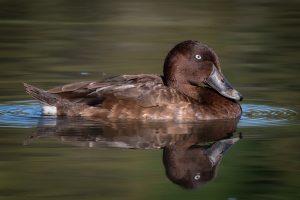
Figure 7: Hardhead (male), (Photo credit: Helen Cunningham)
Australia’s most strangely-named duck. Rather than having a dense skull, the name “hardhead” comes from early taxidermists, who found the duck’s head the hardest part of the body to process. They are chocolate-brown with a large white patch under the tail and the grey bills have a unique blue tip. Hardheads can be hard to find in Tasmania as they are a bit fussier than other native ducks, preferring wetlands with plenty of vegetation for nesting and deep fresh water. They dive underwater for their food, mainly eating aquatic vegetation and animals like freshwater shellfish and mussels.
Australasian Shoveler – Anas rhynchotis
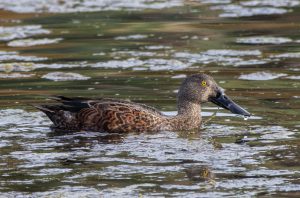
Figure 8: Australian Shoveler (male) (Photo credit: Helen Cunningham)
Compared to the Hardhead, this duck’s name is spot on! They’re most commonly found in wetlands in Southwest and Southeast Australia as well as New Zealand, and their massive bill is best described as a shovel attached to its face. This bill has small grooves along its edges that are used to filter insects, crustaceans and plants from water or soft mud while dabbling. Shovelers are a medium-sized duck that would be easily confused with a mallard or a pacific black duck x mallard hybrid if it weren’t for the massive bills. Males have bright orange legs and females have dark brown feathers with light brown feather edges like some mallards, as well as a think black stripe through the eye. Males however have bright yellow eyes, a dark grey/blue head with a white vertical stripe along the edge of the bill.
Musk Duck – Biziura lobate
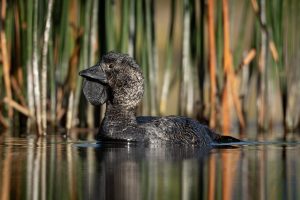
Figure 9: Musk Duck (Photo credit: Helen Cunningham)
A contender for Australia’s strangest duck, they are also the biggest. Males are bigger than females, and the bulk of their body is submerged, making them look deceivingly small. This extra weight means they rarely fly and prefer to swim. They are diving-ducks and mainly feed on aquatic animals, such as insects, frogs, fish and crustaceans that they hunt for underwater. Musk ducks are black-brown overall with pale brown streaks. The bill is short and stubby and the tail is made up of long, stiff feathers. The males are easily identified by the large, leathery lobe of skin that hangs below the bill. Musk ducks get their name from their musky smell, but you’d have to be very close to one to be able to smell it!
Like many native ducks, they don’t quack. Musk ducks instead whistle and have even been known to learn other vocal noises when raised in captivity, mimicking other ducks and even humans! Musk ducks can live over 20 years, much longer than most other ducks.
Blue-billed Duck – Oxyura australis
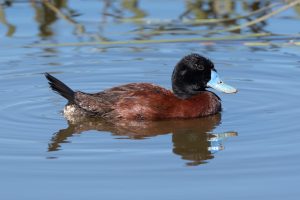
Figure 10: Blue-billed Duck (Photo credit: Helen Cunningham)
All Tasmanian ducks are excellent paddlers on water, but not many are as talented as blue-billed ducks under the surface. BBDs are a species of diving-duck, and feed on invertebrates and aquatic vegetation by diving deep in fresh water to find food in soft mud. Male Blue-billed ducks are easy to identify. They are compact, with chestnut-brown bodies, dark heads and the namesake light-blue bill. Females are similar to female musk ducks and have grey-brown feathers with light brown bands and brown bills. The bill is the best way to tell them apart, as they are much longer than the stubby musk duck’s bill. The tail feathers of BBDs are stiff and pointy and help with diving. The tails are normally not seen as they lie flat on the water, but males point them vertically in the breeding season to attract females. Unfortunately, BBDs are ‘near threatened’ nationally and endangered in Victoria. They are rare visitor to Tasmania.
Similar to – Musk duck
Freckled Duck – Stictonetta naevosa
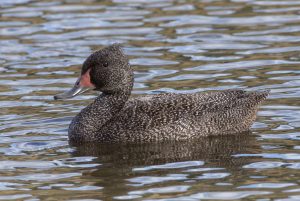
Figure 11: Freckled Duck (Photo credit: Helen Cunningham)
Freckled ducks are the rarest of all Australian ducks, and are an occasional visitor to Tasmania. They spend most of their time on mainland Australia in inland wetlands and disperse out towards coastal areas in the drier summer months. Freckled ducks don’t breed in Tasmania and mainly seem to come here to escape drought conditions elsewhere in Australia. This means that there can be years where there may be no freckled ducks visiting Tasmania at all, and others where many will congregate at dams and lakes around the state (Goulds Lagoon and Queechy Lake are favourite summer getaways).
Freckled ducks are dark brown overall with light brown to white “freckles” all over. The bills are very distinct, broad at the base and sloping down to a flat tip. The heads are large and peaked at the back. During the breeding season, the bills of males go bright red at the base. They mainly eat aquatic vegetation and insects.
Pink-eared Duck – Malacorhynchus membranaceus
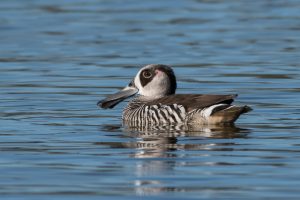
Figure 12: Pink-eared Duck (Photo credit: Helen Cunningham)
Pink-eared ducks are common throughout mainland Australia but a rare visitor in Tasmania. Like many native ducks, their favourite hang-outs include places like Goulds Lagoon and Queechy lake, but they can turn up at many freshwater lakes and dams around Tasmania. Pink-eared ducks are a small, strange-looking duck, easily identified by the dark-brown and white stripes that run from the head to the tail (this is why they’re also known as zebra ducks). They have a brown eye patch and a massive grey bill with a square tip. Their name comes from the small pink patch on the head behind the eye. Pink-eared ducks mainly feed on microscopic plants and animals. Their specialised bills are fringed with small lamellae (comb-like grooves), which helps them to filter this food out from fresh water. It’s believed that breeding pairs bond for life.
Mallards – Anas platyrhynchos & Anas platyrhynchos domesticus
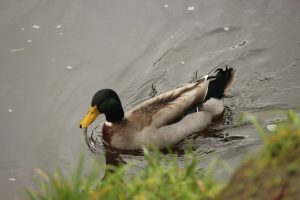
Figure 13: Domestic Mallard (Photo credit: Helen Cunningham)
Mallards are an introduced species in Australia, New Zealand, many Pacific islands. They can look like wild mallards (think the duck emoji) or plain white domestic ducks. Indian Runners, Pekin, Swedish Blues and all other types of domestic farm ducks (apart from Muscovy Ducks) are just different breeds of mallards. Just like how different dog breeds are all the same species, all domestic ducks (apart from muscovy ducks) come from wild mallard ancestors.
Because mallards have been domesticated, they don’t have the same natural fear of humans that native ducks do, and thrive alongside humans as a result. Feeding ducks only supports mallards, because they aren’t as good at foraging for their own food, and most native ducks are too shy to come near people or don’t even eat the food that is being offered. Mallards are bigger and more aggressive than our native ducks, making them the bullies of the duck world. Mallards can live 5-10 years in the wild, sometimes as long as 20 years, which means each individual mallard can breed with many Pacific black ducks and pacific black duck x mallard hybrids in its lifetime.
To protect native ducks from mallards, it’s important to not feed or leave water out for ducks, as this only helps mallards to push out natives more.
Mallard x Pacific Black Duck Hybrid – Anas platyrhynchos x superciliosa
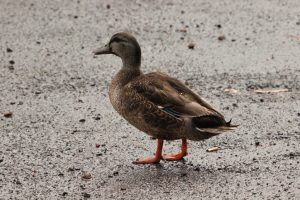
Figure 14: Hybrid of Mallard and Pacific Black Duck (Photo credit: Helen Cunningham)
These hybrid ducks are the result of cross breeding (hybridisation) between introduced mallards and native Pacific Black Ducks. Most hybrid birds aren’t able to reproduce. But the problem with mallard x PBD hybrids is that they can, and so can their offspring, and so on.
They can sometimes be very easy to identify, and other times very difficult. Hybrids can look like a perfect mix of both species and have traits from both sides, or they can look almost exactly like one or the other. The most common traits in hybrids are orange legs, yellow, orange or blotchy bills, brown feathers with large brown feather edge trims and darker faces. It is very common to see ducks that look like genetically pure Black Ducks, until they start dabbling and up-end themselves, showing off a pair of bright orange legs. Hybrids are a threat to Pacific Blacks, because they migrate much further from their birthplace than feral mallards do, bringing them into contact with more pure Black Ducks, making pure Black Ducks rarer over time. Hybrids are now unfortunately the most common duck species in many parts of Tasmania.
Tips for identifying mallard x PBD hybrids. Remember any combination of these traits can occur, and characteristics can vary:
- Bright Orange legs and feet
- Lighter brown feathers
- Orange, yellow or patchy bills, or varying bill colours from the usual slate-grey
- Pale facial stripes and/or very dark faces.
- Brown streaks through the crown (top of the head)
- Curled tail feathers
- White trims on either side of the speculum (green/blue wing panel).
- Any obvious mallard traits
Domestic Muscovy Duck – Cairina moschata domestica
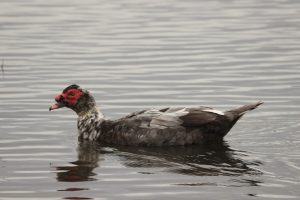
Figure 15: Domestic Muscovy Duck (Photo credit: Helen Cunningham)
Another duck you might see around are feral domestic Muscovy ducks. These are very big ducks, bigger than their wild south American ancestors and males can weigh up to 8kg! Their colours can vary a lot, but they can always be identified by the red lumpy looking faces and massive size compared to native ducks. They are not as common in Australia as other feral ducks. Males can’t fly far due to their weight so they don’t disperse far from where they’ve escaped from or where they have been dumped. Feral Muscovy ducks can survive a long time due to their ability to eat everything: from plants, small fish, insects, frogs, small lizards and even mice!
Muscovy ducks make a great pet alternative to mallards! Instead of loud quacking they are very quiet and don’t quack at all. They have nowhere near the same level of impact as feral mallards, as they do not cross breed with any native species. They can cross breed with mallards, but don’t produce fertile offspring like mallard x pacific black ducks.
Bee Keeping
Urban beekeeping can be an enjoyable hobby, producing a healthy nutritious product for home consumption. Bee keeping is low risk to the human population, however, can cause community concern, especially by neighbours. Beekeepers must take special care so their bees do not become a nuisance to neighbours, or even appear to be a problem. Talk to your neighbours before establishing a hive.
As part of the implementation of the Biosecurity Act 2019 (the Act), beekeeping is now considered a ‘regulated dealing’ and under the Act, a person must not engage in a regulated dealing unless they are registered. Therefore, registration is now compulsory for all Tasmanian commercial and recreational beekeepers. This requirement was formalised in new Biosecurity Regulations 2022 which came into effect on 2 November 2022.
Biosecurity Tasmania has implemented BeeTAS to assist beekeepers with managing their registrations. BeeTAS can be accessed at www.nre.tas.gov.au/beekeeper-registration.
The online system allows beekeepers to:
- register or renew their registration;
- maintain their apiary site information;
- record inspection details, record hive purchases, disposals and hive movements; and
- upload training certification and laboratory results.
The Tasmanian Beekeepers Association’s “Urban Beekeeping Code of Practice” aims to ensure that the keeping of honey bees does not have a negative impact on people, property, domestic animals or native flora or fauna. The code of practice can be found at www.tasmanianbeekeepers.org.au/code-of-practice-for-urban-beekeeping-in-tasmania
